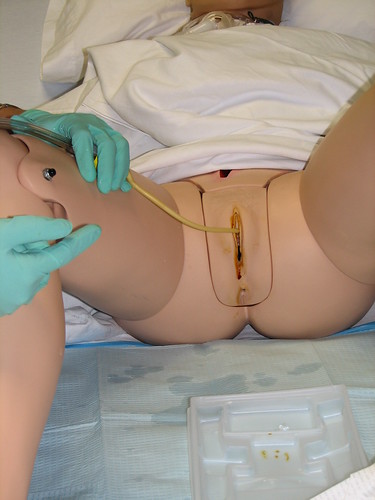Learning Self-Catheterization
 |
Photo license:    Some rights reserved Some rights reservedImmage source |
Once your doctor has assessed you and given you a prescription for the right size and type of catheter, you may feel like you’re on your own. Perhaps an expert has advised you on how to perform the catheterization, but what if something happens that you don’t expect and they aren’t there to guide you?
Here are a few guidelines for self-catheterization to give you an idea of what the process of learning to catheterize yourself might be like, and what you’ll need to be aware of during and after learning how. This blog post is in no way intended as medical advice, and the guidelines listed below are not at all comprehensive. Your doctor is your best authority on self-catheterization.
1.Every 3 to 8 hours, you will need to empty your bladder. Try not to keep more than 400 milliliters (ml) in your bladder at any given time.
2.As you master self-catheterization, be prepared to keep careful records of when you catheterized, how much urine you drained, and whether you were wet, dry, or damp. These records can help you in the process of establishing a routine.
3.Catheterize in the morning when you wake up and at night right before bedtime. If you collect over 400 ml of urine in the morning, or if your bedtime is early, you may need to empty your bladder during the night.
4.Urinary tract infections can be caused by prolonged urine accumulation in the bladder. For this reason, it is very important to avoid skipping a catheterization under any circumstances.
5.Maintain proper hygiene by washing your hands before and after self-catheterization.
6.When you empty your bladder, do so completely, but it’s important to never compress your bladder in an attempt to speed up the process. If you increase bladder pressure, you can cause urine to flow back into your kidneys.
7.Be mindful of your fluid intake. 6-8 glasses per day, using 8 ounce glasses, is considered normal fluid intake. If you increase your fluid intake, you may need to catheterize more frequently, as urine output is a direct result of fluid intake.
8.Maintain catheter stashes in various convenient places: for instance, the bathroom, a purse or backpack, the glove compartment of your car, your desk at work, your locker at school or at the gym.
9.Stay vigilant about the possibility of a urinary tract infection. The symptoms can include: the need to urinate more frequently, painful urination, passing urine that looks cloudy, blood in the urine, fever, chills, vomiting, back pain, and/or flank pain.
10.Be aware of less common complications from self-catheterization, such as urethral stricture (the narrowing of the urethral passage due to scar tissue), bladder injury, bladder stones, and urethral bleeding or pain.
Tim Loshe is a home health care professional with over twenty years of experience in the home care industry. In his free time Tim enjoys blogging about various home health care tips and products.
Category: Surgery


This is an interesting article and very informative. I never know about self catheterization and how people perform them. It seems that the process of self catheterization can be a helpful method if you have uniary issues. I may be a good idea though to talk to a professional before doing so.
ReplyDelete